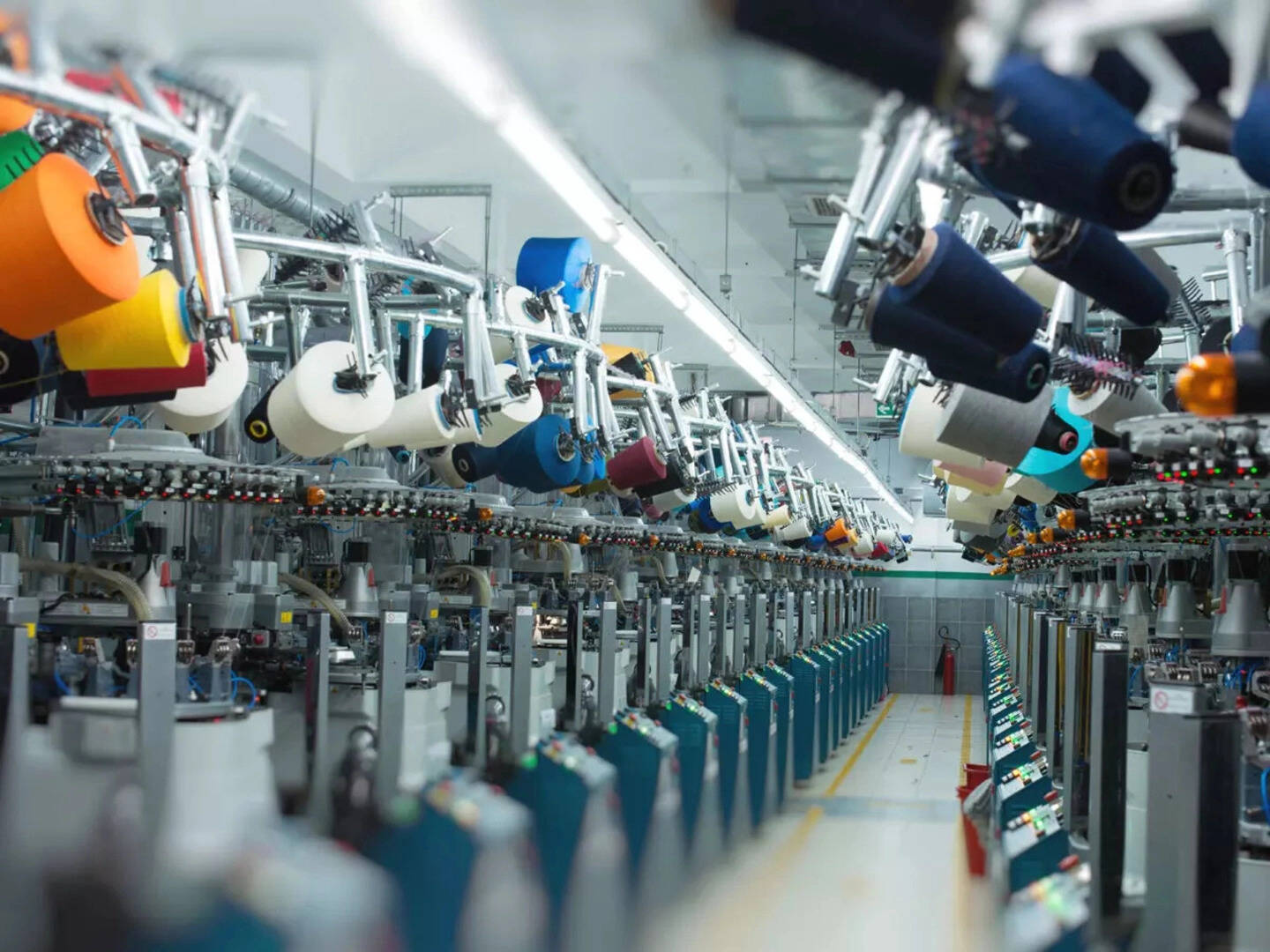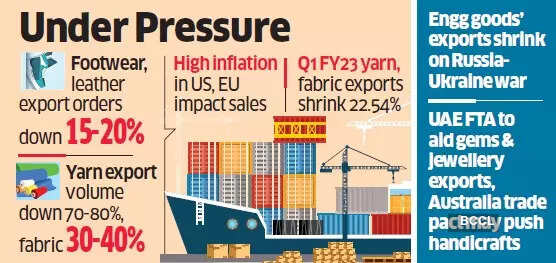
Order books of Indian exporters have begun shrinking as inventories pile up in key export destinations on low demand. Order books have shrunk 15-20% for leather and footwear, while in yarn, volumes have witnessed a sharp 70% fall.
High inflation in the US and the EU slowed take off for cotton yarn, ready-made garments, leather goods and handicrafts, impacting the pace of India’s exports in June, which rose 16.8% on-year at $37.9 billion, slower than 20.5% in May.
“The clients in the US are doing cautious buying as their budgets are tight due to high interest rates. While orders had increased last two years, we expect a 15-20% decline now,” said Rafeeque Ahmed, chairman of Farida Group, one of India’s largest shoe manufacturers and exporters, which is a vendor to overseas firms such as Adidas, Clarks, Marks & Spencer, Debenhams and Bally Shoes.
Exports of yarn, fabric, madeups and handloom products have shrunk 22.54% in June.
“Our cotton prices are higher than global prices and domestic demand has vanished because of stagflation. The order book for yarn is down 70-80% and for fabric 30-40% against a few months ago,” said Sanjay Jain, chairman of ICC National Textile Committee.
Slow retail sales in the US and the EU have delayed the orders for readymade garments while yarn exports have come to a standstill, exporters said.

“Large retail chains are delaying their purchases because of which the orders that were to be picked up in April, have been postponed to October. Our MSMEs are bearing the brunt of this impact,” said a Delhi-based exporter of readymade garments.
Industry representatives said that the pressure on order books due to lower demand will also compress prices in the future.
“Pent up demand led to high exports last year but that trend will be difficult to maintain unless the inventory liquidates. Buyers place their orders for September during this period but that volume has halved,” said one representative.
As per Rakesh Kumar, director general, Export Promotion Council for Handicrafts, overbuying has happened in the US and the EU because of clubbing of containers at the buyers’ ports earlier this year.
“There are excess quantities and orders are slow but we expect them to recover in the coming quarters. Demand from Eastern Europe, Latin America and Middle East is likely and the FTAs with the UAE and Australia will benefit us,” Kumar said.
While the impact on industrial exports is expected to come with a lag, EEPC India chairman Mahesh Desai said the negative spillover of the Russia-Ukraine war has reached engineering goods exports, which declined 1.57% year-on-year in June to $9.14 billion as compared to $9.29 billion in June 2021.
